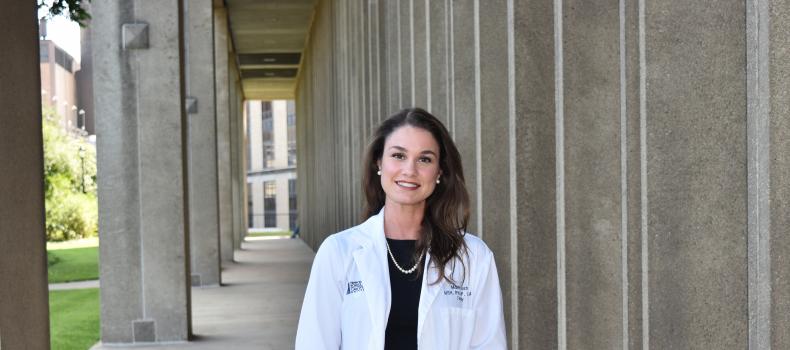Bag packed and the cooler with vials of the one-dose Johnson & Johnson coronavirus vaccine stowed, Marie Grosh, DNP (NUR '21), RN, sets off to visit patients throughout Cuyahoga County.
Once opened, a vial of vaccine must be used within two hours. Each vial contains five doses.
Grosh, an instructor at Case Western Reserve University’s Frances Payne Bolton School of Nursing and a nurse practitioner who has built her independent practice over the last six years, sees six to 10 patients a day as a traveling housecall primary care provider. Many of her patients were eligible to receive a vaccine during Ohio’s Phase 1A rollout, but physically could not get to an appointment.
“Most of my patients are over 65, and many are immunocompromised or are bedbound, and there was no way to take them to a vaccination clinic or bring them a vaccine back in December,” she said.
Once the Johnson & Johnson vaccine arrived—which didn't require deep-freeze cold storage or multiple doses, like other vaccines at the time—Grosh mobilized for her patients when the state approved home delivery by providers in June 2021.
“It wasn’t a regulatory restriction, it was more of a logistical restriction because, as a one-person business owner, I didn’t have a dry ice supplier,” she said. “When the [Johnson & Johnson] vaccine came out, I was able to figure out how to make home delivery work.”
As the pandemic first hit, Grosh tested out virtual visits with her patient population, but limited access to technology and a lack of technological understanding made telehealth difficult for her patient population.
“When you could get over the technology barrier, then you’d hit a communication barrier with patients who have either vision or hearing impairments,” she said. “Basically, once I felt safe enough to do so, I gowned up and gloved up and did my house calls. As long as they were comfortable with it, I felt better being in front of my patients.”
Grosh said some of her patients have declined receiving the vaccine for various reasons, one of which was the pause on using the Johnson & Johnson vaccine.
“We have to remember that these checks and balances are in place for a reason. People become fearful with starts and stops, but that’s the system working,” she said. “We detected this area of concern. We paused and looked into it, and it was determined not to be an issue to prevent continued use for the vast majority with 15 outlier cases out of eight million vaccinated. I think the fact that the pause happened is a testament to the process working as intended.”


